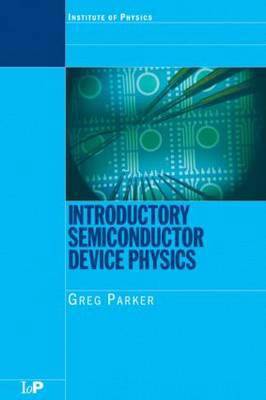
- Afhalen na 1 uur in een winkel met voorraad
- Gratis thuislevering in België vanaf € 30
- Ruim aanbod met 7 miljoen producten
- Afhalen na 1 uur in een winkel met voorraad
- Gratis thuislevering in België vanaf € 30
- Ruim aanbod met 7 miljoen producten
Zoeken
Omschrijving
Introduction to Semiconductor Device Physics is a popular and established text that offers a thorough introduction to the underlying physics of semiconductor devices. It begins with a review of basic solid state physics, then goes on to describe the properties of semiconductors including energy bands, the concept of effective mass, carrier concentration, and conduction in more detail. Thereafter the book is concerned with the principles of operation of specific devices, beginning with the Gunn Diode and the p-n junction. The remaining chapters cover the on specific devices, including the LED, the bipolar transistor, the field-effect transistor, and the semiconductor laser. The book concludes with a chapter providing a brief introduction to quantum theory. Not overtly mathematical, Introduction to Semiconductor Device Physics introduces only those physical concepts required for an understanding of the semiconductor devices being considered. The author's intuitive style, coupled with an extensive set of worked problems, make this the ideal introductory text for those concerned with understanding electrical and electronic engineering, applied physics, and related subjects.
Specificaties
Betrokkenen
- Auteur(s):
- Uitgeverij:
Inhoud
- Aantal bladzijden:
- 302
- Taal:
- Engels
Eigenschappen
- Productcode (EAN):
- 9780750310215
- Verschijningsdatum:
- 30/09/2004
- Uitvoering:
- Paperback
- Formaat:
- Trade paperback (VS)
- Afmetingen:
- 167 mm x 230 mm
- Gewicht:
- 417 g

Alleen bij Standaard Boekhandel
+ 204 punten op je klantenkaart van Standaard Boekhandel
Beoordelingen
We publiceren alleen reviews die voldoen aan de voorwaarden voor reviews. Bekijk onze voorwaarden voor reviews.








